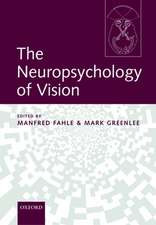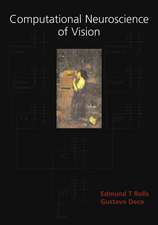Neuroethology and Behavioral Physiology: Roots and Growing Points
Editat de F. Huber, H. Marklen Limba Engleză Paperback – 6 dec 2011
Preț: 953.97 lei
Preț vechi: 1163.38 lei
-18% Nou
Puncte Express: 1431
Preț estimativ în valută:
182.54€ • 190.98$ • 151.64£
182.54€ • 190.98$ • 151.64£
Carte tipărită la comandă
Livrare economică 03-17 aprilie
Preluare comenzi: 021 569.72.76
Specificații
ISBN-13: 9783642692734
ISBN-10: 3642692737
Pagini: 436
Ilustrații: XVIII, 414 p.
Dimensiuni: 170 x 244 x 23 mm
Greutate: 0.69 kg
Ediția:Softcover reprint of the original 1st ed. 1983
Editura: Springer Berlin, Heidelberg
Colecția Springer
Locul publicării:Berlin, Heidelberg, Germany
ISBN-10: 3642692737
Pagini: 436
Ilustrații: XVIII, 414 p.
Dimensiuni: 170 x 244 x 23 mm
Greutate: 0.69 kg
Ediția:Softcover reprint of the original 1st ed. 1983
Editura: Springer Berlin, Heidelberg
Colecția Springer
Locul publicării:Berlin, Heidelberg, Germany
Public țintă
ResearchDescriere
The investigation of the relationships between a behavior pattern and its underlying sensory and neurophysiological mechanisms in both man and animals dates back well into the last century. However, the concepts and findings of ethology and experimental psychology, together with an improved understanding of how the nervous system is organized and how neurons interact with each other, have only in the last 30 years laid the groundwork for an in-depth analysis. The many technological advances achieved in neurophysiology and neuroanatomy have also played an important role in this. The study of the neuronal bases of behavior - for which the term "neuroethology" has been coined - has thus become one of the central themes of neuroscience. Kenneth David Roeder, who died in 1979, was one of the pioneers of this field of research. It is to him that the contributions in this book are dedicated. K.D. Roeder was among the first to attempt to define the correlation between the natural behavior of an experimental animal and the activity of single sensory and nerve cells. The ques tions he asked, his experimental approach, and his fundamental discoveries are pre sented in an introductory chapter.
Cuprins
K.D. Roeder’s Impact on Insect Neuroethology.- I. Neural Bases of Motor Systems.- I.1 On the Way to Neuroethology: The Identified Neuron Approach.- I.2 Local Interneurones and the Control of Movement in Insects.- I.3 The Interaction of Peripheral and Central Components in Insect Locomotion.- I.4 A Neuroethological Approach to the Phylogeny of Leg Stridulation in Gomphocerine Grasshoppers.- II. Sensory Strategies of Adaptation.- II.1 K.D. Roeder and the History of Chemoreception.- II.2 Olfactory Food and Mate Recognition.- II.3 Species Recognition and Acoustic Localization in Acridid Grasshoppers: A Behavioral Approach.- II.4 Neural Correlates of Orthopteran and Cicada Phonotaxis.- II.5 Frequency and Temporal Processing in the Auditory System of Anurans.- II.6 Optics and Accommodation in Owls and Flying Foxes.- III. Neural Development and Behavioral Plasticity.- III.1 Insect Ecdysis: A System for the Study of Internal Chemicals That Control Behavior.- III.2 Maps in the Insect Nervous System, Their Implications for Synaptic Connectivity and Target Location in the Real World.- III.3 Neuroethological Studies of Associative Learning in Feeding Control Systems.- III.4 Learning by Honeybees in an Unnatural Situation.- III.5 The Search for Neural Correlates of Learning in the Honeybee.- IV. Predator — Prey — Relationships.- IV.1 Moth Hearing and Bat Sounds: The History of a Collaboration.- IV.2 The Acoustical Image of Fluttering Insects in Echolocating Bats.- IV.3 How Insects Detect and Avoid Bats.- IV.4 Interception of Flying Insects by Bats.- IV.5 Echolocation and Adaptivity to Ecological Constraints.- IV.6 Neuroethology of Acoustic Prey Localization in the Barn Owl.- V. Ecological Aspects of Social Relations and Orientation.- V.1 Strategies for Acoustic Communication in Complex Environments.- V.2 Vibrational Communication.- V.3 Chemical Manipulation, Enemy Specification and Intercolony Communication in Ant Communities.- V.4 Celestial and Terrestrial Navigation: Human Strategies — Insect Strategies.- V.5 Towards Understanding the Flow of Information Between Objective and Subjective Space.- Epilogue: Neurobiological Roots and Neuroethological Sprouts.















